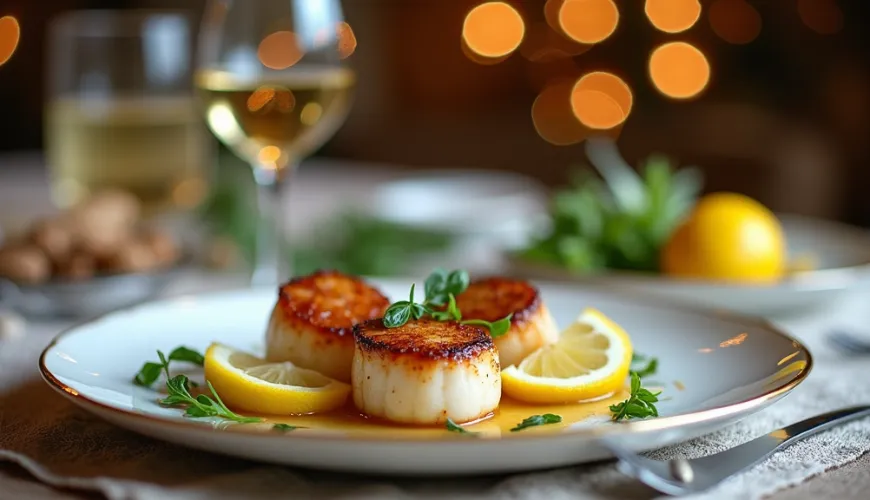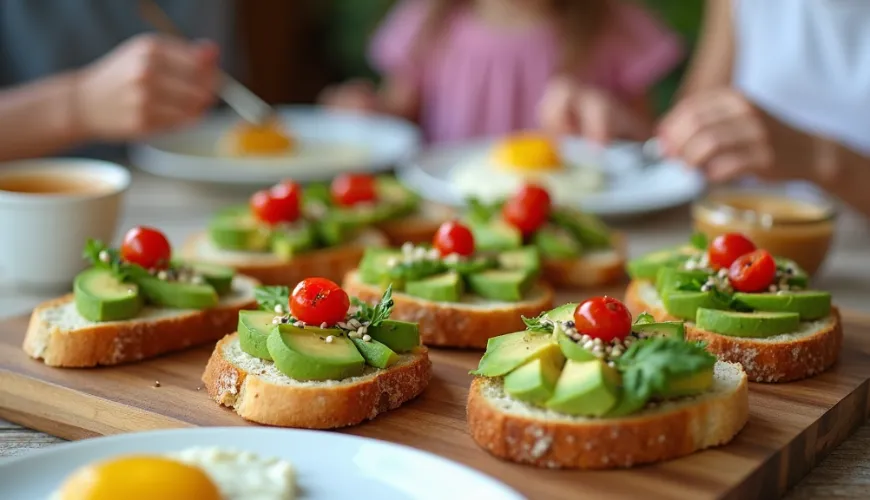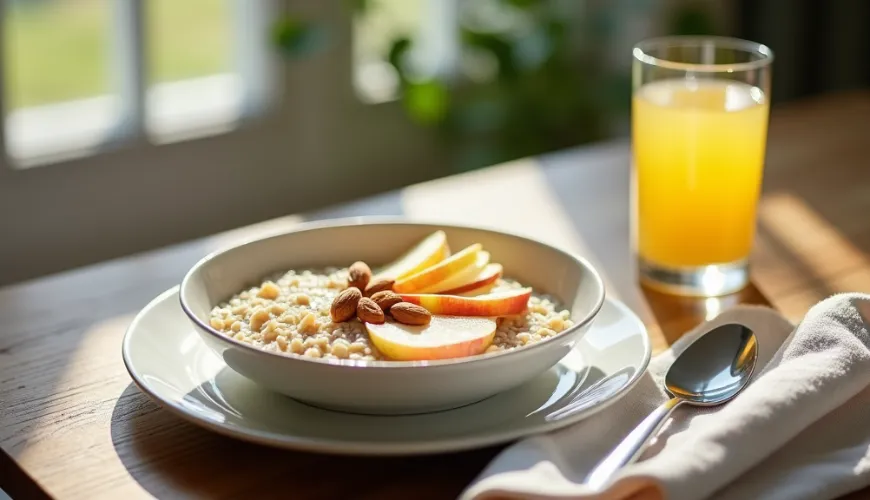
Saint James Scallops: How to Prepare Them Healthily and Deliciously

Saint James Scallops - A Sea Delicacy Worthy of Your Plate
On the plate, they look like sea jewels. They are delicate, yet distinctive. Simple, yet festive. Saint James scallops, also known as scallops, have long surpassed the exclusivity of Michelin-starred restaurants. Today, anyone with a taste for something exceptional can prepare them at home. Thanks to their flavor, nutritional value, and symbolic significance, they have earned a special place in kitchens around the world.
What are Saint James scallops and why are they named so?
Saint James scallops (Latin Pecten maximus) are actually marine bivalves from the scallop family. Their name is linked to the legend of Saint James, one of Jesus's apostles, whose remains were traditionally believed to have been found in Galicia, northwest Spain. The scallop became a symbol for pilgrims on the famous route to Santiago de Compostela – worn on cloaks, hats, or collected along the way as proof of pilgrimage. This symbol persists today and is recognizable on all routes of the Saint James Way.
Besides their spiritual significance, scallops also boast strong gastronomic value. In Europe, they are most commonly harvested along the coasts of France, Ireland, Scotland, and in the Bay of Biscay. Their meat is creamy white, with a delicate texture and a slightly sweet flavor, which pairs beautifully with butter, garlic, lemon juice, or herbs like thyme or parsley.
How to choose quality Saint James scallops?
If you want to prepare Saint James scallops at home, it's good to know how to select them. They are available in two forms on the market – in shells or already cleaned and vacuum-packed. It's always worth opting for fresh products, ideally from a verified fish market or specialized store. Fresh scallops should be firm, odorless, and have a gently pinkish to white color. Frozen scallops can also be tasty, but it's important to thaw them slowly in the refrigerator and dry them thoroughly to maintain their structure during cooking.
Ethics and sustainability of fishing are also important factors. In recent years, more gastronomes and consumers are interested in the origin of seafood. Many scallops come from controlled farming, which doesn't burden marine ecosystems. Therefore, try to choose products with certifications like the Marine Stewardship Council (MSC), which guarantee an environmentally friendly approach to marine environments.
Saint James scallops recipe
One of the great advantages of this sea delicacy is that it doesn't require complicated preparation. On the contrary – the fewer ingredients, the better their natural flavor shines.
The most popular preparation method is pan-searing. All you need is quality olive oil or butter, salt, freshly ground pepper, and perhaps a few drops of lemon. Scallops are seared briefly, approximately 1.5 to 2 minutes on each side. The goal is to create a light golden crust on the surface while keeping the inside soft and juicy.
A real-life example? Imagine a Saturday evening with friends, where you don't want to spend hours in the kitchen but still want something special. You heat butter in a pan, add scallops, quickly sear them, and serve with fresh rosemary, roasted potatoes, and a glass of white wine. Impressive, tasty, quick – and most importantly, unforgettable.
Other popular preparations include:
- Baked Saint James scallops with parmesan, garlic, and herbs
- Scallops in a buttery sauce with shallots and wine
- Scallop carpaccio with lime and olive oil
- Grilled Saint James scallops served with pea or celery puree
How do Saint James scallops fit into a healthy lifestyle?
Healthy eating and sustainability go hand in hand today. Saint James scallops are an example of a food that meets both of these criteria.
From a nutritional perspective, scallops are rich in proteins while being low in fats and carbohydrates. They contain valuable minerals like zinc, selenium, and magnesium, and are also an excellent source of vitamin B12, important for the nervous system and red blood cell production. Additionally, they are easily digestible, making them an ideal choice for those who want to eat healthily without sacrificing gastronomic pleasure.
Try our natural products
One of the key benefits is also their low-calorie content – 100 g of Saint James scallops contain approximately 90 calories, which is less than most meats or fish. This makes them suitable even for weight loss diets or when looking for light yet nutritious meals.
Saint James scallops and their place in modern gastronomy
In recent years, Saint James scallops have appeared more frequently in Czech restaurants, not just the luxurious ones. They are becoming part of seasonal menus, tasting evenings, and weekend brunches. Their sophisticated taste, aesthetic appearance, and relatively easy preparation make them a popular choice for many chefs.
A quote from the famous French chef Jacques Pépin captures their charm well:
"Great food is not about complexity, but about the quality of ingredients and the love in preparation."
And Saint James scallops are proof that even a simple ingredient can offer an unforgettable culinary experience.
Scallops also perfectly fit into the trend of the so-called "new simplicity," which focuses on local and seasonal ingredients, while emphasizing sustainability and waste minimization. Scallop leftovers can be used to make broth or as a sauce base. And if you have shells, you can use them as stylish serving dishes or unconventional decorations.
A small sea miracle worth trying
Whether you're looking for inspiration for a festive dinner, a healthy meal, or just want to expand your culinary horizons, Saint James scallops will certainly not disappoint you. Their preparation is quick, the taste is delicate yet distinctive, and the serving possibilities are almost limitless.
In the end, it doesn't matter whether you prepare them traditionally with butter or experiment with exotic flavors like miso, mango, or ginger. What's important is that you treat yourself to a dish that connects history, culture, and a healthy lifestyle – a combination that certainly won't be lost on the plate.




